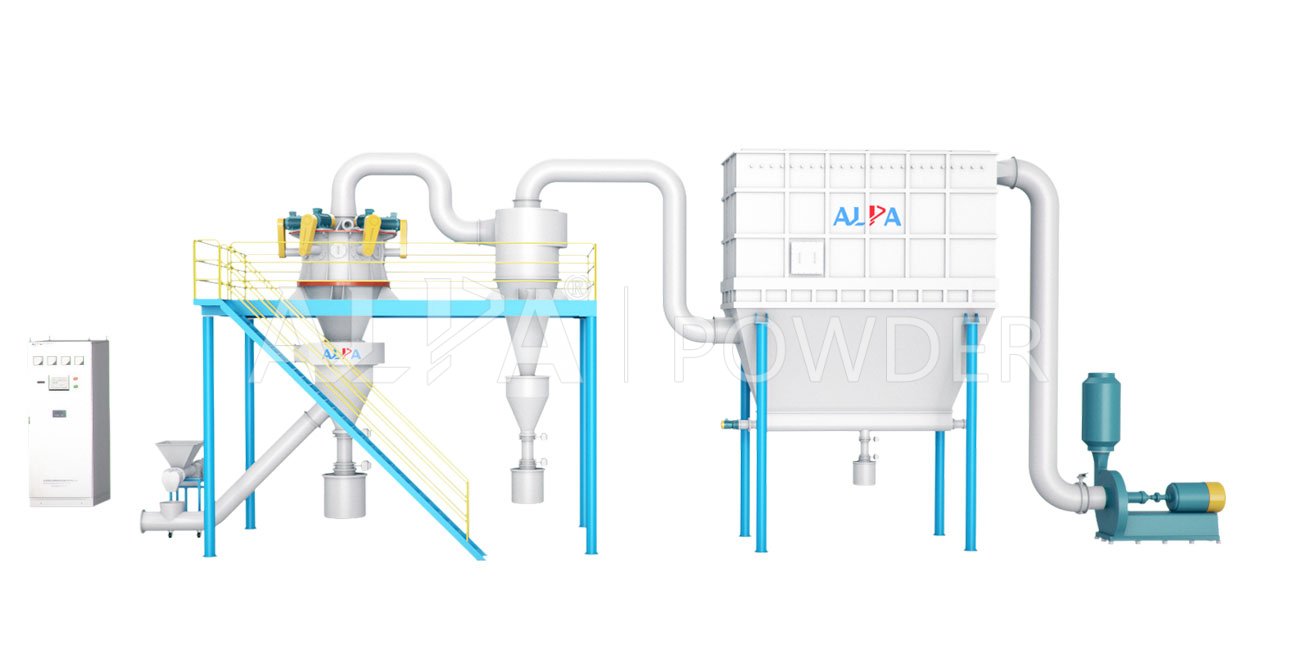| After-sales Service Provided: | Engineers available to service machinery overseas |
|---|---|
| Warranty: | 1-year |
| Brand Name: | ALPA |
| Type: | Sprial Separator |
| Condition: | New |
| Certification: | CE, ISO |
| Weight: | 500kg |
| Dimension(L*W*H): | 1*1*1 |
| Power(W): | 26kw |
| Voltage: | Local |
| Model Number: | FW/HTS |
| Place of Origin: | China (Mainland) |
| Production Capacity: | 0.2-30t/h |
| Name: | Air Separator |
Quick Details
Specifications
Talc Mineral Powder Air Cyclone Separator

Air Cyclone Separator Application: Widely used in chemical industry, minerals (especially suitable for non-mineral materials classifying, such as calcium carbonate, kaolin, quartz, talc, mica), metallurgy, abrasives, ceramics, refractory materials, medicines, pesticides, food, health products, new materials, etc. Industry.
Air Cyclone Separator Advantages:
1.Available D50:1.5-25um;
2.Suitable for precise classifying of dry micron material,, can classify spherical, flaky, needle-like particles, and can also classify particles of different densities;
3.System negative pressure operation, meet environmental requirements, noise <76dB(A);
4.Optional explosion-proof design, can also be upgraded to a nitrogen circulation system to meet the processing needs of flammable and explosive oxide materials;
5.PLC control system, easy operation;
6.the classifying wheel can be made of ceramic materials such as alumina, zirconia and silicon carbide, without metal pollution, meeting the requirements of high-purity materials.
Air Cyclone Separator Working Principle:
the classifier and cyclone separator, dust collector and induced draft fan form a classifying system.
under the action of fan suction, the material is moved from the lower inlet of the classifier to the classifying zone with the ascending airflow.
under the strong centrifugal force generated by the high-speed rotating turbine, the materials are separated and the fine particles which meet size requirements through the classifier impeller gap into the cyclone separator or the dust collector, the coarse particles entrained part of the fine particles collided with the wall and the velocity disappeared, descending along the cylinder wall to the secondary air outlet, and the coarse and fine particles were separated by the strong washing action of the secondary air.
the fine particles rise to the classification zone for secondary classifying, and the coarse particles are lowered to the discharge port for discharging.
Air Cyclone Separator Application: Widely used in chemical industry, minerals (especially suitable for non-mineral materials classifying, such as calcium carbonate, kaolin, quartz, talc, mica), metallurgy, abrasives, ceramics, refractory materials, medicines, pesticides, food, health products, new materials, etc. Industry.
Air Cyclone Separator Advantages:
1.Available D50:1.5-25um;
2.Suitable for precise classifying of dry micron material,, can classify spherical, flaky, needle-like particles, and can also classify particles of different densities;
3.System negative pressure operation, meet environmental requirements, noise <76dB(A);
4.Optional explosion-proof design, can also be upgraded to a nitrogen circulation system to meet the processing needs of flammable and explosive oxide materials;
5.PLC control system, easy operation;
6.the classifying wheel can be made of ceramic materials such as alumina, zirconia and silicon carbide, without metal pollution, meeting the requirements of high-purity materials.
Air Cyclone Separator Working Principle:
the classifier and cyclone separator, dust collector and induced draft fan form a classifying system.
under the action of fan suction, the material is moved from the lower inlet of the classifier to the classifying zone with the ascending airflow.
under the strong centrifugal force generated by the high-speed rotating turbine, the materials are separated and the fine particles which meet size requirements through the classifier impeller gap into the cyclone separator or the dust collector, the coarse particles entrained part of the fine particles collided with the wall and the velocity disappeared, descending along the cylinder wall to the secondary air outlet, and the coarse and fine particles were separated by the strong washing action of the secondary air.
the fine particles rise to the classification zone for secondary classifying, and the coarse particles are lowered to the discharge port for discharging.



